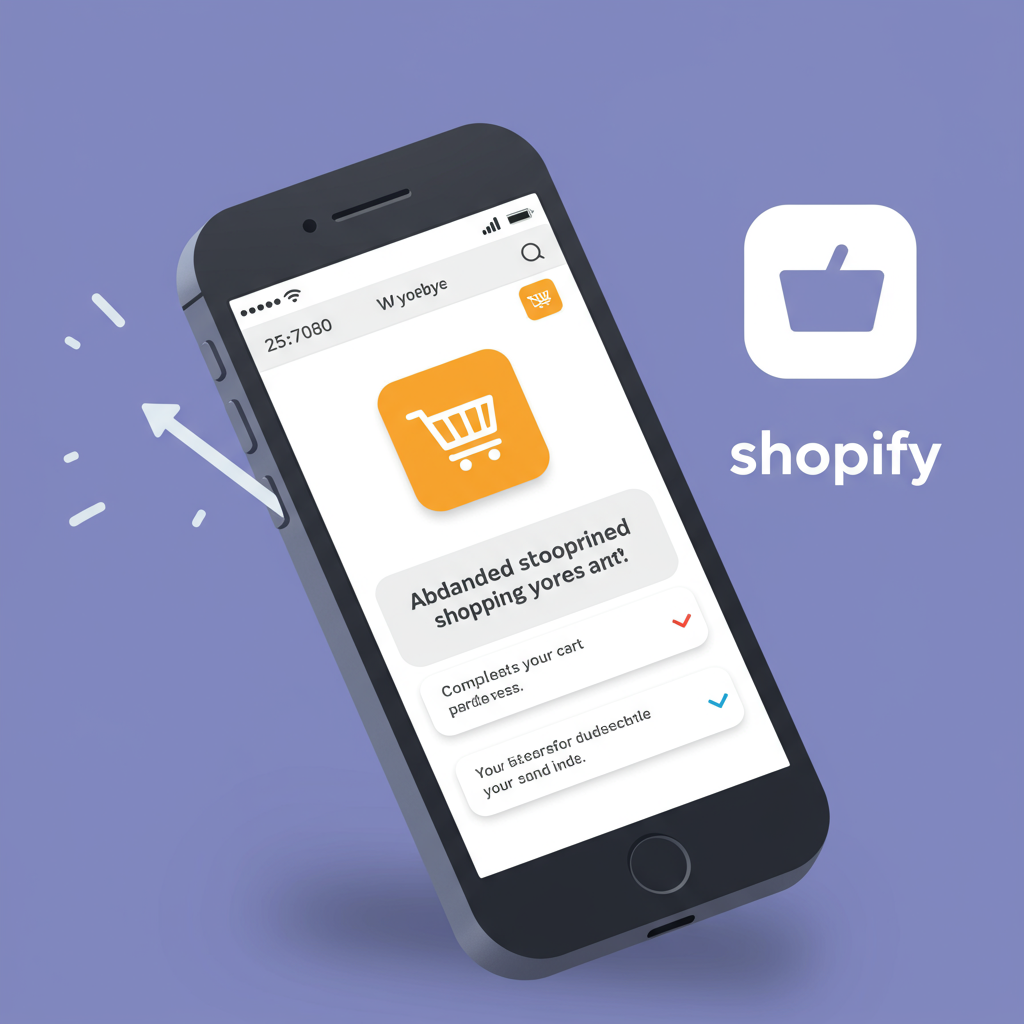Discover how I’ve helped countless Shopify merchants recover lost revenue and boost conversions using strategic SMS campaigns.
As a seasoned e-commerce strategist, I’ve seen firsthand the frustration merchants face with abandoned carts. It’s a universal challenge, but one that, with the right approach, can be transformed into a significant revenue opportunity.
Email marketing for abandoned carts is a staple, and rightly so. However, in today’s fast-paced digital world, I’ve found that SMS marketing offers an unparalleled level of immediacy and engagement that email simply can’t always match.
Think about it: how often do you check your emails versus how quickly you open a text message? The statistics speak for themselves – SMS open rates often hover around 98%, with most messages read within minutes of receipt.
This incredible engagement rate makes SMS an indispensable tool in your abandoned cart recovery arsenal, especially for Shopify stores looking to maximize every potential sale.
So, how do we leverage this power effectively? It’s not just about sending a generic text; it’s about crafting a strategy that feels personal, timely, and valuable to your potential customer.
My first piece of advice is always to ensure you have proper consent. This is non-negotiable. You must obtain explicit opt-in from your customers before sending them any marketing SMS messages, including abandoned cart reminders.
Shopify apps like Postscript, SMSBump (now Yotpo SMS & Email), or Klaviyo are excellent choices for integrating SMS capabilities directly with your store. I recommend exploring their features to find the best fit for your specific needs and budget.
Once you’ve chosen your platform, the next step is setting up your automation. This is where the magic happens. You’ll want to configure a series of messages that trigger automatically when a customer leaves items in their cart without completing a purchase.
I typically advise a multi-message flow. The first message should be sent relatively quickly, perhaps within 15-30 minutes of abandonment. This catches the customer while their intent is still high.
This initial message should be a gentle reminder. Something like, ‘Hey [Customer Name], looks like you left something behind at [Your Store Name]! Complete your order here: [Link].’ Keep it concise and direct.
The second message, if the first doesn’t convert, can be sent a few hours later, or even the next day. This is where you might introduce a small incentive to nudge them towards conversion.
A common tactic I employ is offering a discount code. ‘Still thinking about it? Here’s 10% off your cart at [Your Store Name]! Use code [CODE] at checkout: [Link].’ This can be incredibly effective.
However, don’t just throw discounts around. Consider your profit margins and brand perception. Sometimes, simply reminding them of free shipping or a unique selling proposition is enough.
The third message, if necessary, could be sent 24-48 hours after the second. This is often a last-ditch effort, perhaps emphasizing scarcity or the impending expiration of an offer.
For example, ‘Your cart at [Your Store Name] is about to expire! Don’t miss out on these items. Shop now: [Link].’ This creates a sense of urgency without being overly aggressive.
Personalization is key. Always use the customer’s name if possible. Dynamic fields in your SMS platform allow you to pull in details like their name, cart items, and a direct link back to their specific cart.
Timing is crucial. While I mentioned general timeframes, test what works best for your audience. Consider their typical shopping habits and time zones. You don’t want to send messages in the middle of the night.
Another best practice I advocate for is clear branding. Even in a short SMS, ensure your store name is recognizable. This builds trust and reduces the chance of your message being perceived as spam.
Include a clear call to action (CTA). What do you want them to do? ‘Complete your order,’ ‘Shop now,’ ‘Claim your discount’ – make it unambiguous.
Don’t forget the opt-out option. By law and best practice, every marketing SMS must include instructions on how to opt out, usually by replying ‘STOP’. This is vital for compliance and maintaining a healthy sender reputation.
I also recommend A/B testing your messages. Experiment with different copy, incentives, and timing to see what yields the highest conversion rates for your specific customer base.
Analyze your results regularly. Look at open rates, click-through rates, and most importantly, conversion rates. Are your SMS campaigns recovering a significant portion of abandoned carts? If not, iterate and improve.
Beyond the initial recovery, consider how SMS can nurture customer relationships. Once they convert, you can use SMS for order confirmations, shipping updates, and even future promotions (with consent, of course).
One common mistake I see merchants make is sending too many messages or making them too salesy. Remember, the goal is to help the customer complete a purchase they *intended* to make, not to badger them.
Another pitfall is not linking directly to the abandoned cart. Make it as easy as possible for them to pick up exactly where they left off. Every extra click is a potential drop-off point.
Finally, integrate your SMS strategy with your email and other marketing channels. They should complement each other, not compete. A customer might respond better to one channel over another at different times.
What do you think about these strategies? Have you found success with SMS marketing for your Shopify store, or are you just getting started? I’d love to hear your insights and experiences.
Implementing these best practices for Shopify abandoned cart SMS marketing can significantly impact your bottom line. It’s about being present, helpful, and timely, turning potential losses into guaranteed wins.
So, take the leap, set up your SMS flows, and watch your abandoned cart recovery rates soar. Your customers, and your revenue, will thank you for it.






